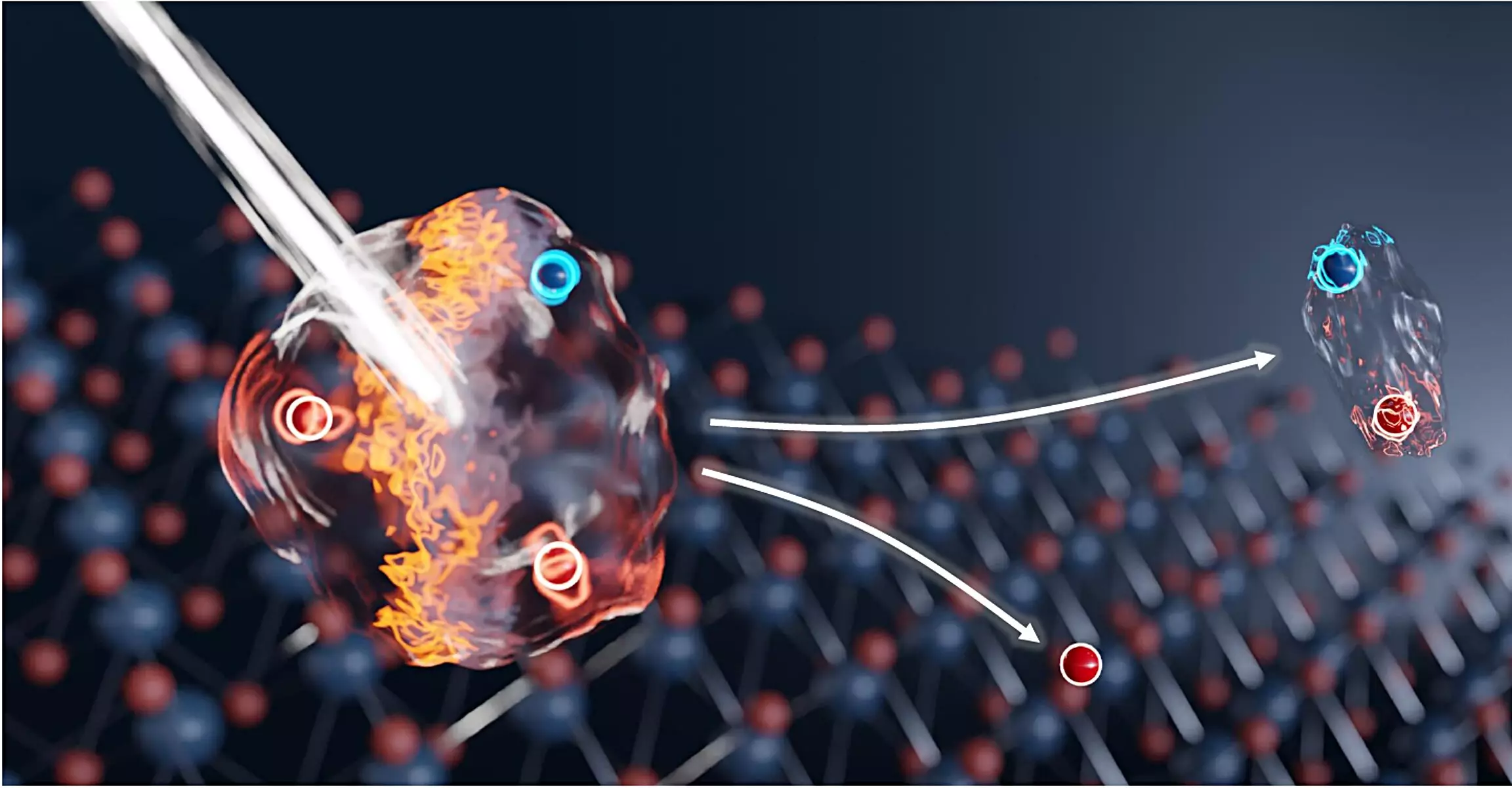The advent of two-dimensional (2D) materials, characterized by their atomically thin structures, has the potential to revolutionize various fields, particularly electronics and quantum technologies. These materials demonstrate unique physical properties that differ significantly from their conventional bulk counterparts. Recent research spearheaded by a team from TU Dresden, in collaboration with Helmholtz-Zentrum Dresden-Rossendorf (HZDR), has made notable strides in utilizing these materials. Their groundbreaking experiment, published in *Nature Photonics*, highlights advancements in the switching processes of luminescent particles within an ultra-thin material structure, paving the way for innovations in optical data processing and flexible detectors.
In two-dimensional semiconductors, the excitation of electrons plays a pivotal role in the formation of more complex particle systems. When energy is absorbed, an electron is energized and dislocated from its original position, leaving behind a positively charged vacancy termed a “hole.” The resulting electron-hole pair forms a bound entity known as an exciton. This relationship can further evolve when another nearby electron interacts, creating a trion—a three-particle system that embodies both electric charge and remarkable light emission capabilities. The trion’s dual nature allows for simultaneous control of electronic and optical properties, making it a focal point of interest in current research.
While the theoretical underpinnings of switchable states between excitons and trions have been explored, practical implementations have faced considerable challenges, particularly in switching speeds. Historically, many laboratories have achieved transitions between these states, yet the velocities were deemed insufficient for practical applications. Prof. Alexey Chernikov, leading the recent study, along with Dr. Stephan Winnerl from HZDR, made significant advancements in enhancing the speed of these transitions.
The team utilized specialized infrastructure at HZDR, including the FELBE free-electron laser, which emits intense terahertz pulses. These pulses fall in a frequency range between radio waves and near-infrared radiation and are crucial for manipulating the excitonic states within the material. The researchers began their experiment by illuminating a thin layer of molybdenum diselenide with laser pulses at cryogenic temperatures, effectively creating excitons. Upon the generation of excitons, terahertz pulses were employed to prompt the rapid conversion of trions back to excitons.
The findings revealed that the weak connection formed between excitons and electrons can be effectively disrupted using terahertz radiation, leading to record-breaking speeds in switching. The bond breaking occurred within picoseconds—trillionths of a second—rendering the method nearly a thousand times quicker than traditional electronic approaches. This capability signifies a monumental leap forward in the control of excitonic states, suggesting new applications in technology and materials science.
The implications of this research extend beyond laboratory curiosity. The ability to manipulate excitons and trions with unprecedented speed opens avenues for innovative applications in sensor technologies and optical data processing. Future endeavors may involve deploying these dynamics to create novel modulators for quick switching capabilities. Additionally, the integration of these ultra-thin materials could yield compact components adept at electronically regulating optically encoded data.
Moreover, the advances in detecting terahertz radiation could lead to the development of sophisticated imaging systems capable of harnessing these quantum states. Chernikov posits the potential for creating terahertz cameras, equipped with numerous pixels, that rely on the demonstrated switching processes in two-dimensional semiconductors. The ability to utilize relatively low-intensity triggers for switching could render this technology widely accessible and applicable in various fields.
The research conducted by TU Dresden and HZDR illustrates the transformative potential of atomically thin materials in reshaping our understanding of electronic behaviors. As researchers continue to explore the intricate dynamics of excitons and trions, new materials and applications are likely to emerge. This groundbreaking work underscores the importance of continued investment in quantum technologies and encourages a reevaluation of the capabilities of 2D materials in shaping the future of electronics and optical systems.

